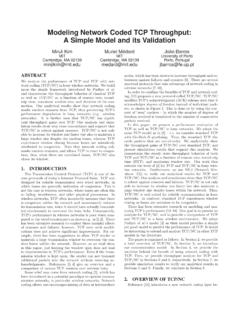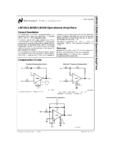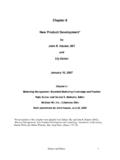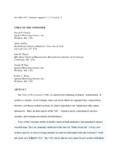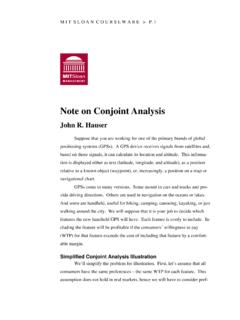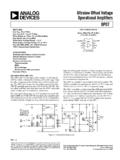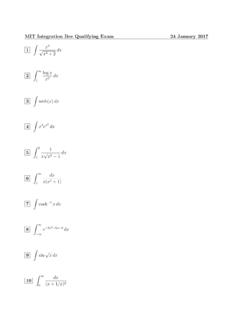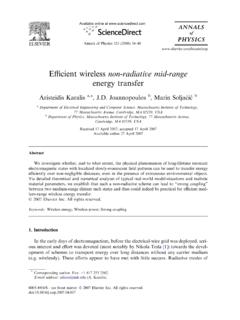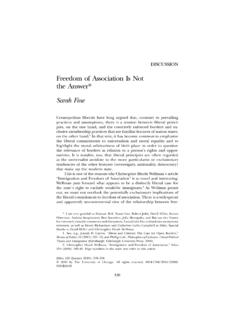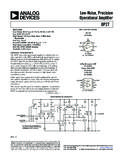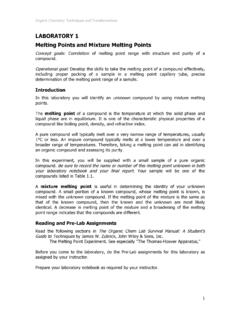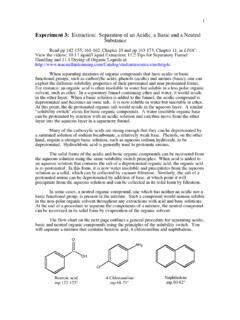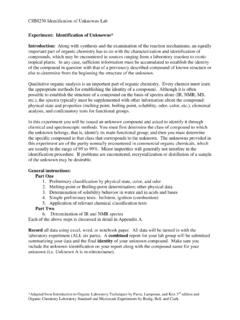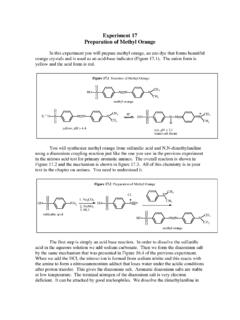Transcription of The Kosterlitz-Thouless Transition
1 The Kosterlitz-Thouless TransitionHenrik Jeldtoft JensenDepartment of MathamticsImperial CollegeKeywords: Generalised rigidity, Topological defects, Two DimensionalXY-model, Superconductivity, Two dimensional Melting, Renormalization1 IntroductionMatter in the universe is organised in a hierarchical structure. At the bottom we haveelementary particles: quarks, gluons, electrons etc. At present we don t know what theseparticles are made off. But we believe we know that quarks, gluons etc. make up protons,neutrons, etc. These then go together to make atoms, that are the building blocks ofmolecules. Atoms and molecules gives us gas, liquids and solids from which we get starsand planets which are grouped together in galaxies, that then form clusters and eventuallywe arrive at the entire universe.
2 Or from atoms and molecules we get macro molecules likeproteins and DNA, that are the building blocks of organelles, which together form the cells we get organs, that put together form organisms: animals and plants of a greatvariety of species. The totality of individuals and species constitute the entire branch of science is concerned with the breaking-up of systems into smaller andsmaller parts. The behaviour and properties are studied at each respective level. StatisticalMechanics is concerned with the opposite quest. Namely, from the interactions between thecomponents, say atoms, at one given level the aim is to understand the collective coherentbehaviour which emerges as many atoms are but together and the next level if the microscopic details of the properties of theindividualbuilding blocks are not socrucial.
3 Rather it happens that the collective behaviour is controlled by general propertiesof theinteractionbetween the building atoms .In these lectures we shall discuss a particular case, where it is possible to follow indetail, how components at one level go together and form certain collective coherent struc-tures: topological defects or topological charges. These charges can be Coulomb chargesin two dimensions, dislocations in two dimensional crystals, vortices in two dimensionalsuperconductors and more. The interaction between the topological charges depends in allcases logarithmically on the spatial separation and this leads to some very general collectivebehaviour, most spectacular it causes a certain type of phase Transition : the Kosterlitz-Thouless Transition [1].
4 12 The Two Dimensional XY-ModelWe will use the 2d XY-model as our reference model. The model consists of planar rotors ofunit length arranged on a two dimensional square lattice. The Hamilatonian of the systemis given byH= J i,j Si Sj= J i,j cos( i j).(1)Here i,j denotes summation over all nearest neighbour sites in the lattice, and idenotesthe angle of the rotor on siteiwith respect to some (arbitrary) polar direction in the twodimensional vector space containing the we assume that the direction of the rotors varies smoothly from site to site, we canapproximate cos( i j) by the first two terms 1 12( i j)2in the Taylor expansion ofcos. The sum over the nearest neighbours corresponds to the discrete Laplace operator,which we can express in terms of partial derivatives through i j= x for two siteiandjwhich differs by one lattice spacing in thex-direction.
5 This leads to the continuumHamiltonianH=E0+J2 dr( )2.(2)HereE0= 2 JNis the energy of the completely aligned ground state thermodynamics of the system is obtained from the partition functionZ=e E0 D[ ] exp{ J2 dr( )2},(3)a functional integral over all possible configurations of the director field (r). The integralover (r) can be divided into a sum over the local minima vorofH[ ] plus fluctuations swaround the minimaZ=e E0 vor D[ sw] exp{ (H[ vor] +12 dr1 dr2 sw(r1) 2H (r1) (r2) sw(r2))}.(4)The field configurations corresponding to local minima ofHare solutions to the extremalcondition H (r)= 0 2 (r) = 0.(5)There are two types of solutions to this equation. The first consists of the ground state (r) =constant.
6 The second type of solutions consist of vortices in the director field (seeFig. 1) and are obtained by imposing the following set of boundary conditions on the cir-culation integral of (r):1) For all closed curves encircling the positionr0of the centre of the vortex (r) dl= 2 n.(6)2) For all paths that don t encircle the vortex positionr0 (r) dl= 0.(7)2 Condition 1) imposes a singularity in the director field. Note the circulation integralmustbe equal to an integer times 2 since we circle a closed path and therefore (r) has topoint in the same direction after traversing the path as it did when we can estimate the energy of a vortex in the following way. The problem is sphericalsymmetric, hence the vortex field vormust be of the form (r) = (r).
7 The dependence onrcan be found from Eq. 6. We calculate the circulation integral along a circle of radiusrcentred at the positionr0of the vortex2 n= (r) dl= 2 r| |.(8)We solve and obtain| (r)|=n/r. Substitute this result into the Hamiltonian Eq. 2 Evor E0=J2 dr[ (r)]2(9)=Jn22 2 0 Lardr1r2(10)= n2 Jln(La).(11)The circulation condition Eq. 6 creates a distortion in the phase field (r) that persistsinfinitely far from the centre of the vortex.| |decays only as 1/rleading to a logarithmicdivergence of the energy. Hence we need to take into account that the integral overrinEq. 10 is cut-off for larger-values by the finite system sizeLand for smallr-values by thelattice spacinga. We recall that our continuum Hamiltonian is an approximation to thelattice Hamiltonian in Eq.
8 1. A vortex with the factornin Eq. 6 larger than one is calledmultiple charged. We notice that the energy of the vortex is quadratic in the charge. In anmacroscopically large system even the energy of a single charge vortex will be now a pair of single charged vortex and an anti-vortex. When we encirclethe vortex we pick up dl = 2 and when we encircle the anti-vortex we pick up dl = 2 . Hence, if we choose a path large enough to enclose both vortices we pickup a circulation of the phase equal to 2 + ( 2 ) = 0. the distortion of the phase field (r) from the vortex anti-vortex pair is able to cancel out at distances from the centre ofthe two vortices large compared to the separationRbetween the vortex and the anti-vortex,see Fig.
9 2. This explains why the energy of the vortex pair is of the formE2vor(R) = 2Ec+E1ln(R/a).(12)WhereEcis the energy of the vortex cores andE1is proportional toJ. In detail, the phasefield 2vor(r) of a vortex located atr= ( a,0) and an anti-vortex located atr= (a,0) isgiven by 2vor(r) = arctg(2aya2 r2).(13)3 Lack of Ordering in Two DimensionsIn order to highlight the peculiarity of two dimensions we consider thed-dimensional XY-model. We imagine ad-dimensional cubic lattice. Each lattice site contains a planar rotor3or a phase. In the continuum limit the Hamiltonian is still given by Eq. 2 except theintegral overris now ad-dimensional integral and therefore the factorJis replaced byJa2 d.
10 The average size of the projection of the rotors along the x-direction inSspace, magnetisation, is Sx = cos (r) (14)= cos (0) .(15)We neglect the singular vortex contributions (which is perfectly safe at low temperature)and Fourier transform the phase field (r) = dk(2 )d (k)e ik r(16) (0) = dk(2 )d (k)(17) dr( )2= dk(2 )dk2 (k) ( k).(18)These eqs. are substituted into the expression Sx = D[ ] cos( (0))e H D[ ]e H=Re( D[ ] cos( (0))e H+i (0)/Z).(19)After some algebra one obtains the following expression Sx = exp( T2Ja2 dSd /a /Ldkkd 3).(20)The behaviour of Sx is controlled by the integralI(L) = /a /Ldkkd 3.(21)The behaviour ofI(L) strongly depends on the dimensiond. Ford <2 we haveI(L) L2 d as . Hence, Sx = 0 in the limit of large systems for dimensions less than2.
